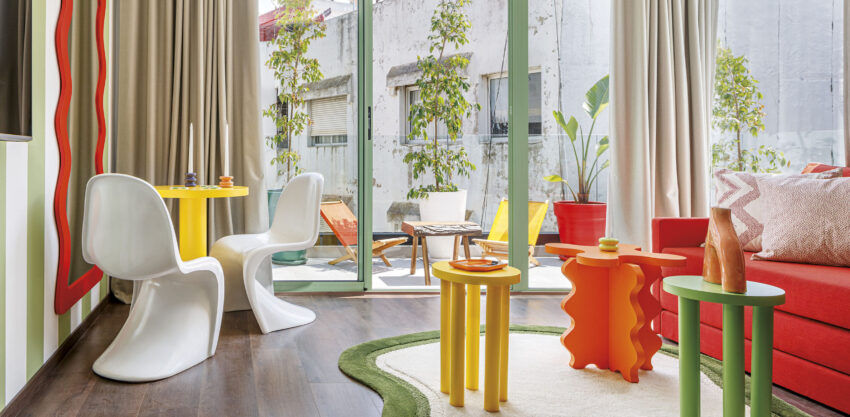Maximalism is an art movement that is in sharp against minimalism. While minimalism is famously adamant about “Less is more,” maximalism focuses on the opposite principle that is “More is more.”
In the wider perspective of the postmodern movement that encompasses the cultural and aesthetic changes that took place following World War II, maximalism is characterized by its aversion to rigid norms and values. Instead, it embraces uncertainty and diversities, blurs the lines between fantasy and reality as well as encourages spontaneity. It encourages the liberty of speech.
The essence of maximalism is that it blends various design trends as well as styles that challenge principles of rationalism and bourgeoisie enshrined by previous movements. It is a reflection of the postmodern person who is flooded by a myriad of information.
Maximalism, a subset within postmodernism that drew a significant amount of inspiration from the architect Robert Venturi during the 1960s. Venturi was a fervent advocate of pure modernism, opposed the idea decoration in architectural design by his famous quote “Less is boring,” which was a constant challenge to the tenets of minimalism.
Maximalism is also an opportunity to promote multicultural diversity, involving ethnic minorities and minority groups, as well as emphasising the aesthetic diversity of all social classes.
Let’s look into the work of a few famous designers and architects who are maximalists:
Daria Zinovatnaya
Ukrainian designer Daria has found the success she has achieved through her retro-futuristic and geometric designs that skillfully blend primary colours with vibrant, vivid colors.
In addition to creating commercial and residential areas, Daria has ventured into creating furniture pieces. She was recognized as a winner of the highly coveted Red Dot Design Award in 2017. RedDot Design Award.
Whatever your personal preferences are for the style she chooses, it’s evident that Daria’s work is awe-inspiring. Her lavish spaces draw the eyes, and it’s nearly impossible not to be drawn by the appeal of the many forms and colors that coexist within her creations.
Freddy Mamani
Despite not having formal education, Mamani has gained significant recognition among the wealthy inhabitants from El Alto, Bolivia. He explains that his style is a modern interpretive from Andean native culture and incorporates elements like LED lighting, intricately decorated plaster mouldings.
Many criticize Mamani’s work. His structures were dubbed “transformers” and even “robocops”. However, there’s no doubt that Mamani has made history.
His impact is so significant that it prompted being a speaker held at the Architectural Association in London, which was featured by Architectural Digest, and even an exhibit dedicated to His work in the Cartier Foundation in Paris last year.
Adam Nathaniel Furman
Adam Nathaniel Furman, an Argentine artist and architect with Japanese and Israeli traditions, is a prominent figure in the realm of maximalism.
Adam is an artist of the postmodernist style. His artistic pursuits run the entire spectrum, including the creation of artworks, environments installations furniture, text and manifestos as well as graphic art. In addition, he has been granted invitations to lead short courses at a variety of universities around the world.
He’s a big fan of pastel colors, and his work is inspired by research on the usage of color and graphics for interior and public spaces.
Camile Walala
Camile is a French designer with a base in London who describes herself as the designer behind”tribal pop. “tribal pop” style. Her work is renowned for her exaggerated use of triangular shapes, stripes, and circles influenced by indigenous art and African art and design.
She was invited to work on product lines or installations at Harrods, Nike, Converse, Facebook, TopShop, and Swatch.
Her most recent creation that sparked controversy was a house constructed inside an entire container made from LEGO pieces, right from down to the tap and she dubbed”the House of Dots. It took over 2 millions of Lego pieces to complete this project.
I’m a huge admirer of her style and it’s no wonder that we have her work on display in places such as gas stations and museums. She’s creative, imaginative and has a sophisticated sense of color and geometric.
Why Study Maximalism?
Apart from being a language that is representative of diversity, and also the debates about tolerance and acceptance which are relevant in the present the maximalism movement is an aesthetic movement that has seen a rise in aesthetics in the last few times.
It also has a strong visual appeal, it is inextricably linked with social media as well as the images, they can be a symbol throughout the years (there is a piece on this on this site). Maximalism is a powerful tool when it is used correctly. can give professionals an identity and a signature which can be used not just in architecture or design, it also in museum installations, exhibitions, and even products.
It doesn’t matter if you like it or not, the maximalism trend is here to stay, and it’s worth trying to find a niche within the vast array of possibilities.

